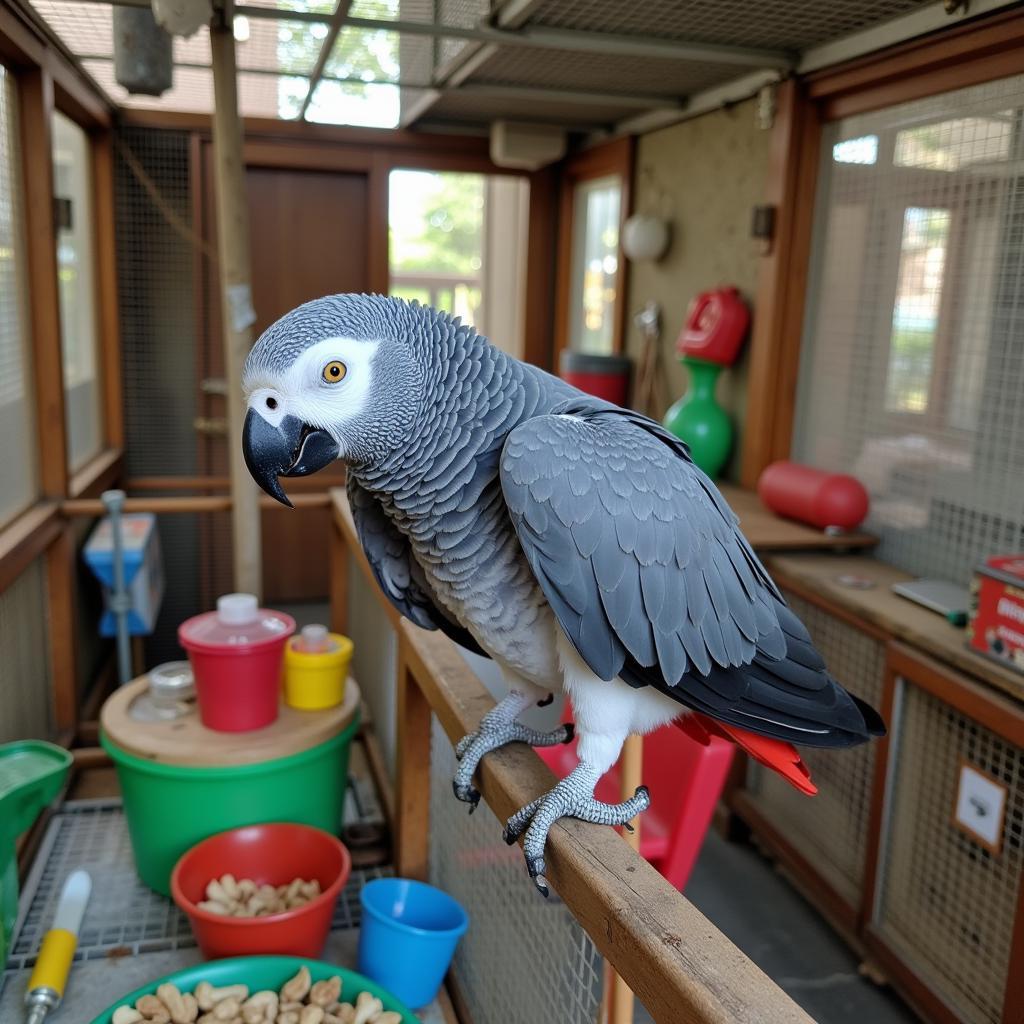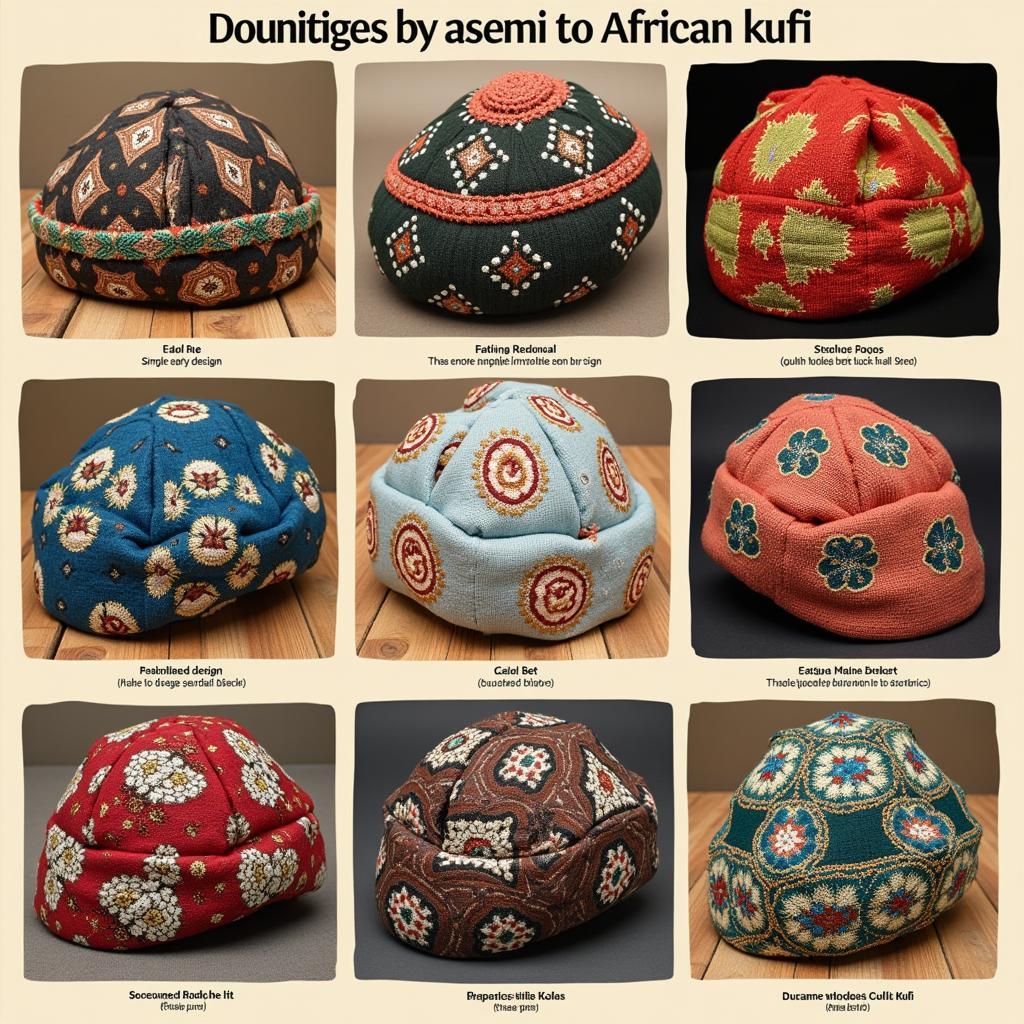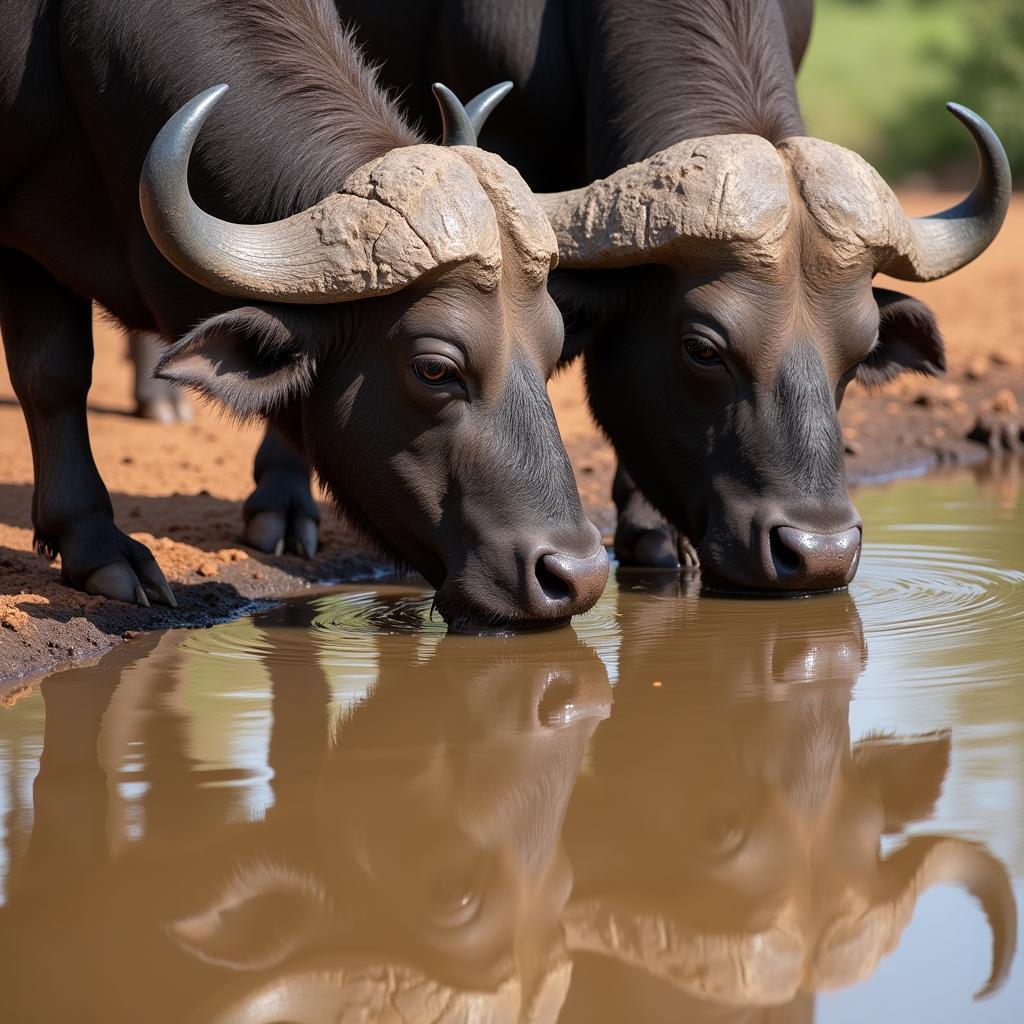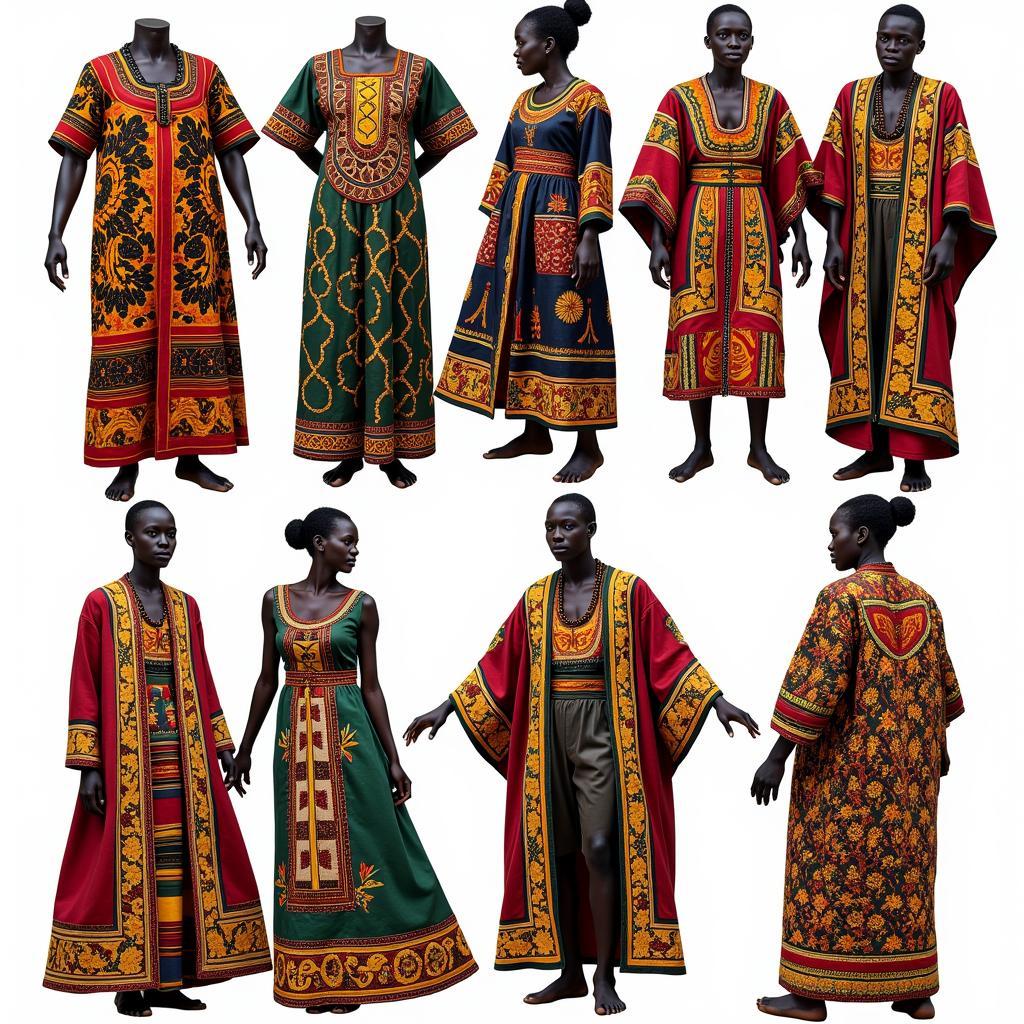African Dance Pants: A Celebration of Movement and Culture
African Dance Pants, vibrant and flowing, are more than just garments; they’re an integral part of the continent’s rich cultural tapestry. From the intricate beadwork of Maasai warriors to the colorful patterns adorning Yoruba dancers, these pants tell stories of tradition, heritage, and the boundless energy of African dance.
 Various styles of African dance pants
Various styles of African dance pants
The Language of Fabric: Understanding the Significance
Across Africa, dance transcends mere entertainment; it’s a powerful form of communication, expressing joy, sorrow, spirituality, and everything in between. African dance pants play a crucial role in this non-verbal dialogue. The choice of fabric, color, and embellishments speaks volumes about the dance, the occasion, and the cultural context.
For instance, in many West African cultures, white signifies purity and is often seen in pants worn for spiritual dances. Rich, vibrant colors like red and gold might represent royalty and power, gracing the attire of dancers performing for chiefs or during festivals.
Beyond Aesthetics: Functionality in Motion
While aesthetics are undeniably important, African dance pants are also designed for functionality. The loose, flowing silhouettes allow for a full range of motion, essential for the energetic jumps, spins, and footwork characteristic of many African dance styles. This freedom of movement allows dancers to fully embody the rhythm and spirit of the music.
“The fabric moves with you, becoming an extension of your own body,” says Adwoa Agyemang, a Ghanaian dance instructor. “It adds another layer of expression to the dance, amplifying every gesture and step.”
From Everyday Wear to Ceremonial Garb
While some African dance pants are specifically designed for performances, others seamlessly transition from everyday wear to ceremonial garb. The iconic “buba” of West Africa, a loose-fitting, tunic-like top often paired with matching pants, exemplifies this versatility. Worn by men and women, the buba can be dressed up or down, adapting to different occasions and reflecting the wearer’s personal style.
 An African family dressed in traditional attire, including flowing pants
An African family dressed in traditional attire, including flowing pants
Exploring Regional Variations: A Tapestry of Styles
From North Africa’s flowing djellabas to the beaded skirts and intricately patterned pants of East Africa, the continent boasts a breathtaking diversity of dance attire. Each region has its own unique styles, reflecting its specific cultural influences, climate, and traditions.
For instance, the Maasai people of East Africa are known for their striking red shukas (cloths) and elaborate beadwork. Their dance attire often features layers of beaded necklaces, bracelets, and anklets, creating a mesmerizing visual and auditory spectacle as the dancers move. In contrast, the Yoruba people of West Africa are renowned for their vibrantly colored fabrics and elaborate headdresses, often adorned with intricate beading and embroidery.
African Dance Pants in the Modern World: A Global Influence
Today, African dance pants have transcended geographical boundaries, captivating audiences worldwide and influencing fashion trends globally. From runways to dance studios, these garments are celebrated for their vibrant colors, bold patterns, and undeniable comfort.
As people across the globe embrace the energy and spirit of African dance, the popularity of these pants continues to grow, serving as a testament to the enduring power and beauty of African culture. Whether worn for performance, celebration, or everyday expression, African dance pants remain a powerful symbol of movement, heritage, and the unifying power of dance.



